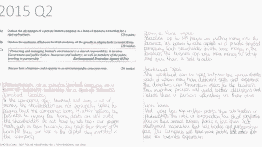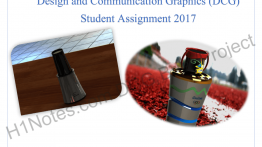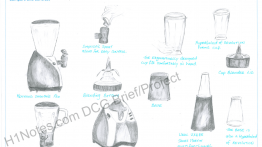Description
Physics Notes & Experiments, Definitions, Derivations
H1 Standard Leaving Certificate Physics Notes
Finally, after months of making these notes, we are proud to offer you our H1 standard Leaving Certificate Physics notes!
After looking back through books and my old notes, I started with over 1000 slides and reduced it to 350 slides of the only notes that you'll need for your Leaving.
These notes have 31 chapters and the notes cover all sections of the Leaving Certificate Physics course including Particle Physics.
This is one of the most concise Leaving Certificate Physics notes online and at only €25 euro costing much less than some of the other notes online.
The Physics Paper Layout:
Section A-
Mandatory experiment questions. 40 marks per question. Spend 18 minutes on each question and is worth 30% of the paper.
1-Mechanics
2/3-Heat, light, sound
4-Electricity
Answer 3 out of 4 questions.
Section B-
56 marks at 25 minutes each and is worth 70%
5: Short Questions (Answer 8 out of 10)
6: Mechanics
7: Waves, Light & Sound
8: Electricity
9: Modern Physics
10/11: One of them is a choice: Answer 1 of them ( Applied Electricity or Particle Physics
12: Mixed question-Answer 2 out of 4.
Leaving Cert Physics Experiments, Definitions, Derivations and Demonstration Experiments
Because the mandatory experiments come up in the physics leaving cert experiments so frequently it is important to understand them as a basis for each section. Also, it is recommended that you learn the definitions, derivations and demo experiments. While you won't be expected to have done these experiments you will be expected to understand how it is done.
So, the experiments in this project are:
-
Physics Experiments: Mechanics
- Verify Boyle's Law.
- The relationship between the period & length for a simple pendulum & hence calculation of Gravity (g).
- To measure the constant acceleration of a rider on an air track using 2 timing gates & a timer.
- Show that the acceleration of a body is directly proportional to the force acting on it hence verifying (F=ma)
- To verify the principle of conservation of momentum.
- Verify the laws of equilibrium.
- Measure acceleration due to gravity using free-falling apparatus & scale timer.
- To measure the constant velocity of a rider on a linear air track using a light gate.
-
Physics Experiments: Heat
- To plot the calibration curve of a thermometer using the lab mercury thermometer as a standard.
- Measurement of the specific latent heat of vaporisation of water.
- Measure the specific heat capacity of water by an electrical method.
-
Physic Experiments: Light
- Verify Snell's Law & measure the refractive index of glass (n).
- Verify Snell's Law & measure the refractive index of a liquid.
- To measure the wavelength of monochromatic light.
- Measure the focal length of a convex lens.
- The focal length of a concave mirror.
-
Physics Experiments: Sound
- To measure the speed of sound in air
- Investigate the variation of the fundamental frequency of a stretched string with (due to) length.
- Investigate the variation of the fundamental frequency of a stretched string with (due to) tension.
-
Physics Experiments: Electricity
- To investigate the variation of resistance of a thermistor with (due to) temperature.
- To investigate the variation of current (I) with the potential difference (V) for:
- Metal
- Bulb
- Electrolyte
- Inactive Electrodes
- Gas
- To measure the variation of the resistance of a metallic conductor with (due to) temperature.
- Verification of Joule's Law.
- Measure the resistivity of the material of a wire.
-
In addition- Demonstration experiments:
- Lenz's Law.
- Electromagnetic Induction.
- Current-Carrying Conductor in a Magnetic field experiences a force.
- The principle which the definition of Ampere is based.
- Factors on which capacitance depends.
- Capacitor Store Energy.
- Using Ice & Steam points to calibrate a thermometer.
- Sound is a Wave.
- Show distribution of charge on an object.
- Electric Field.
- Archimedes’ Principle.
- Show light is a Wave ( Young’s Double Slit Experiment).
- Resultant of Vectors.
- Atmospheric Pressure.
This product also includes 9 pages of every definition on the course, 4 pages of derivation & 2 pages of laws. Therefore, this product covers almost everything on the course!
If you are looking to get a leg up in the Leaving Cert physics course we would recommend purchasing the notes and the Leaving Cert Physics Experiments, Definitions, Derivations and Demonstration Experiments - you save €5 if you buy both too!
As you can see we are constantly trying to expand our selection of notes to include more traditional subjects, such as Leaving Cert Higher Level French. Therefore, keep an eye out on the site and our socials to see when we come out with these too!
Therefore, while we are creating these notes for you, make sure you follow us on our socials:
Facebook
If you liked these notes you may also like some of our other products for example:
Our H1 standard Maths Notes
Finally, if you have any question in relation to our notes, send us an email by clicking here























Abby –
Great notes! I didn’t realise before buying it was power point style notes which was totally my fault! but other than that all good!